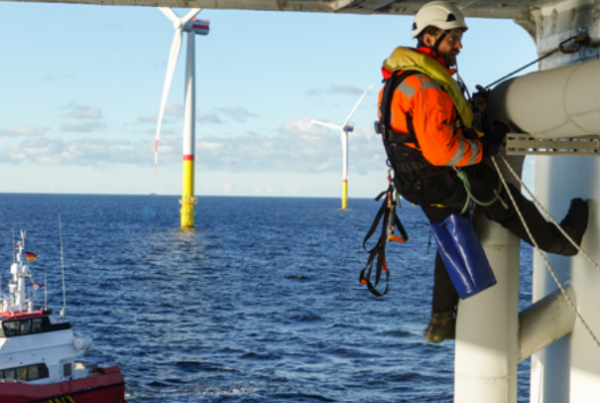Bringing together remote operations and people is easier said than done. In this Blog, we take a look at how the unifying power of Workforce Management technology addresses the top six challenges facing offshore organisations today.
Companies in the offshore engineering industry face many challenges from the sheer size of their global operations and the complex projects they manage to external factors such as hazardous work conditions, tough safety regulations with even tougher penalties for non-compliance, and the perennial problem of skills shortages. They also need to compete in a sector that is undergoing enormous change and increasing consolidation.
Bringing together people and resources on-and-offshore to deliver huge, complex projects on time and on budget involves many different processes. Think of it like a very big jigsaw puzzle: including ensuring there are enough skilled workers available, scheduling them in a timely manner, preparing them for travel, check-in/embarkation and paying them correctly using the right tax code as vessels and barging move across international waters. Then making sure specialist equipment is well-maintained and in the right location, safety training is completed, the list is endless. One missing piece can throw everything into disarray. It’s a massive feat of end-to-end organizational planning.
The end goal is to reach optimal levels of both staffing and other resources, all the while containing costs and ensuring regulatory and safety compliance. All too frequently however, the information overload involved in creating a joined-up approach to managing international crews, complex equipment and projects is overwhelming. How do offshore companies confront today’s challenging environment head-on and flourish?
Our White Paper discusses the six ways Workforce Management (WFM) has the power to unify and galvanize the whole organisation to embrace operational, regulatory and wider industry changes with confidence.
Six challenges, one solution
Today’s versatile WFM technology provides one single solution to tackle the following offshore challenges head on:
1. Compliance – ensuring compliance with strict international safety legislation is an overriding focus for the offshore industry but has traditionally been a complex, time-consuming and costly process. Advanced WFM systems track an organisation’s end-to-end compliance activities, automatically warn them of impending non-compliance issues and provide an up-to-date audit trail that drives, evidences and demonstrates regulatory compliance.
2. Optimal Resourcing – knowing what you have, where and when is crucial to running offshore operations in a totally seamless way. Today’s WFM technology with advanced scheduling, resource optimisation, reporting and decision-making tools bring together all information relating to staff, vessels and equipment in one centralised solution. It also controls costs by facilitating ‘what if’ scenarios that evaluate demand against budgets and compliance management before spending a single dollar.
3. Staff Engagement – is a top priority. Build trust by creating flexible schedules that take into consideration staff skills and certifications, travel requirements and visas, personal preferences, holidays and training commitments. Self-service functionality can empower crew with easy to access to up-to-date schedules and the option to request shift swaps or book time off.
4. Change Readiness – failure to prepare for changes, whether operational, regulatory or from the wider industry, have a critical impact on scheduling optimisation and overall organisational planning. Successful offshore companies thrive under change and excel at decision making. They often depend on innovative WFM technology to provide an enterprise-wide view of resourcing and demand. Combined with sophisticated business intelligence analytics and reporting capabilities, WFM can add agility and boost competitive advantage.
5. Nuanced Scheduling Implications – are other activities such as ‘time to invoice’ that are an important part of the overall resource optimisation process. Through automation and integration with important business applications, WFM solutions can improve the invoicing process by reducing the time and effort required to compile and generate accurate invoices that reflect specific project codes, work types, pay rates and different tax jurisdictions.
6. Systems Interfacing – the latest WFM solutions draw together core scheduling, resource optimisation and allied activities contained in HR or ERP systems to present a singular, unified view for managers. However, rather than bolt together existing systems that might not be the most appropriate, it enables the best available solution to be deployed. Being delivered on a Software-as-a-Service (SaaS) basis, the right solution can overcome many of the financial barriers associated with capital purchase, as well as the IT implementation and management challenges resulting from an on-premise infrastructure.
Embrace WFM to address the key challenges facing offshore organisations today and be rewarded with an efficient, streamlined and seamless operation that is financially fit, prepared for change and ready to flourish.





